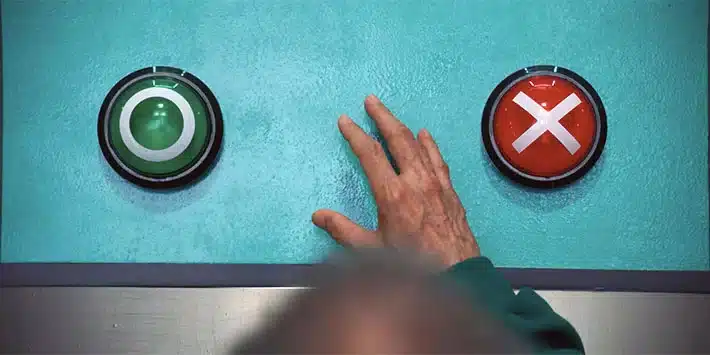Getting To Yes By Going For No
All too often in sales training, we are taught to focus on getting the potential client to say “yes” to the offer. Little tricks, like getting someone to say yes three times to small and insignificant questions, will open the customer up to be more likely to say yes when you want it. You suppose to do a little bit of, what I’d like to call, soft programming during the pitch.
I want to dig a little deeper and look at the power that a no has for conversions.

Giving your target a false sense of power
Let’s admit it, saying “no” is empowering. We almost wait patiently on a sales call just to pounce in and pull the rug out from underneath the poor salesperson. So, why don’t we offer our audience the ability to achieve that empowerment in the confines we control?
This is a negotiation tactic that Christopher Voss wrote about in his book, Never Split The Difference.
I offer two examples:
Are you satisfied with the number of customers your business receives? Our proprietary system is tailored to help you effortlessly attract more customers at a fraction of your current costs.
Continue to put in an additional two hours a day in your off hours for a year, and you can turn your side hustle into your full-time career. The alternative is to make a small investment in a done-for-you service that will handle everything for you.
Prefacing your offer with “no” opens the reader up to the solution being the no-brainer. You really don’t need to explain. You allow them to make their own comparison and decide on their own that your offer is a better option that the alternative.
They are in control of the decision, but you preemptively choose what they are deciding between.
Just make sure your preemptive strike isn’t a ridiculous comparison such as:
Do you earn seven figures or more in annual revenue? This never before seen sales hack can earn you millions.
Once you lose credibility, it’s game over.
Audience filtering with purposeful no’s
Even when we are taught to seek a “no,” it is for the purpose of getting to a “yes.” I hear statements like, “for every no means you’re one step closer to a yes.”
Sure, that all sounds nice and dandy, but I like to give some additional validity to the “no.” A negative response can be extremely powerful, yet we toss it to the side and treat them like the red-headed stepchild of the CRO world.
Even in the above example, we use the “no” to persuade a “yes.”
The “no” has so much more power. We can use it to save everyone’s time and resources by helping people self-filter.
“Everyone is not your customer”
– Seth Godin
As a business owner and marketer, you must focus on those who are the best fit for your offer. This is one of the top reasons why identifying your ideal clientele is a massive step every marketer should take.
Once you know your ideal client, speak to them and only them.
You will dramatically increase the conversion rate with those you wish to do business with. Those who aren’t a great fit are most likely not to convert.
This form of filter is a good thing if you want to build a strong company backed by happy clients’ support.
Once more, those who aren’t a fit will appreciate you not wasting their time and money.
Everyone wins.
All you need to do is stop and ask if your words are aimed at the masses or your ideal clients.
Path to least resistance
Can you convince the masses to buy? Probably. Should you? Nope. You will burn a ton of resources tending to an unqualified buyer.
The path to least resistance is pre-filtering your ideal clients so that you can deliver a targeted message. Then, empower those ideal clients by carefully crafting a “no” response that leaves your offer as a no-brainer option.
